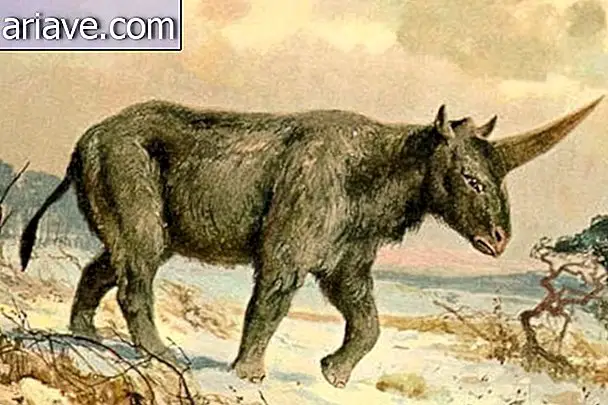1.8 million year old intact skull could change evolutionary history
After eight years studying a 1.8 million year old skull found in the Republic of Georgia, scientists have made a discovery that can rewrite the evolutionary history of humans. The reason is that this skull is the most complete ever found of our ancestors and shows that the first hominids to populate the planet may belong to a single species.
This was the conclusion reached by an international team of scientists led by David Lordkipanidze, a paleontologist at the Georgia National Museum in Tbilisi, as reported on Thursday (18.10) in the journal Science.
Another story for evolution
Named "Skull 5, " the finding was described by scientists as "the world's first fully preserved adult hominid skull, " raising the question that species such as Homo erectus, Homo rudolfensis, and Homo habilis were no different, but all of the same. same lineage, which evolved into modern man.
For many years, scientists believed that several human species had inhabited the earth for two million years, and this new discovery puts this theory in doubt. The discovery of “Skull 5” alongside the remains of four other hominids in Dmanisi, a region of the Republic of Georgia, gave scientists the opportunity to compare and contrast the physical traits of ancestors who apparently lived in the same place during the same period. of time.

According to Lordkipanidze and his colleagues, the fossils found in Georgia were quite different from each other, but still belonged to members of the same species, and this was the key point of the discovery: there are no different species but differences within the species itself.
"If the skull and skull face of Skull 5 had been found separate in distinct regions of Africa (where other known fossils were already found) they could have been attributed as different species, " said study co-author Christoph Zollikofer of the University. from Zurich. This was because this was the common practice of researchers, who used variations in characteristics and regions to define new species.
So what kind would it be?
According to what Marcia Ponce de León, who also did the research, said in a statement, they observed Skull 5 has a pattern very similar to African fossil records (about 2.4 million years old) and they assume that they may belong to the same species. But what would she be?
Some members of the research team simply call it "Homo." Others emphasized the strong resemblances to Homo erectus, which lived between two million and less than a million years ago, regarding it as the most primitive Homo erectus ever found.

According to The New York Times, Skull 5, and all four other hominid skulls and skeletons, were found in underground burrows, suggesting dire scenes from the risky lives these early Homos had.
They lived among carnivores, including saber-toothed tigers and a type of primitive giant leopard. All five individuals were probably attacked and killed by carnivorous animals and had their corpses dragged into the pits for a post-hunting "banquet". The finding suggests that the species originated in Africa and was expanding to Eurasia, spreading to places such as Georgia.
Disagreements between scientists
According to researcher Christoph Zollikofer, they are not against the idea that there may have been several species two million years ago. However, they say they do not have enough fossil evidence to distinguish between species.
However, others are unconvinced and go against the theories proposed by the discovery. Fred Spoor of the Institute for Evolutionary Anthropology in Leipzig, Germany, agrees that the discovery is fantastic and has a unique preservation over time. In addition, it also agrees that the Dmanisi specimens belong to Homo erectus and that it was variable. However, he does not believe that all African fossils belong to Homo erectus .
He points out that Lordkipanidze's analysis suggests that the hominids found were much more similar to monkeys in the genus Australopithecus (due to their small stature and small cranial casing) , considering them as the erectus group , and do not believe that this is correct to state. . Apparently, the breakthrough will still litter the sleeve and endless discussions among evolution researchers.











